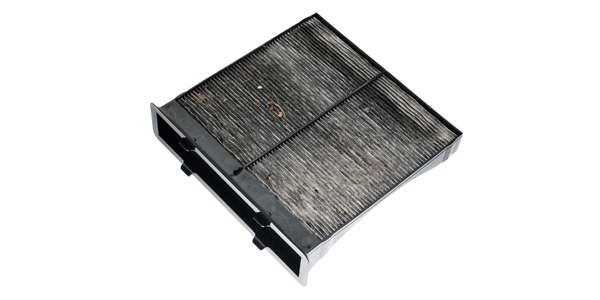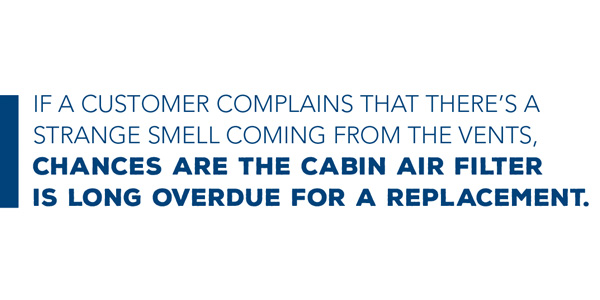
Cabin air filters may not be the most exciting part of today’s vehicles, but their role in cleaning up the interior air can be vital to your customers’ health.
Air pollution is becoming a bigger concern, even as cars are producing fewer emissions. Since the 1990s, automakers have included cabin air filters as a standard feature on vehicles, to remove dust, pollen, allergens and soot from the air in the interior of the car.
Much like an air filter for your home’s HVAC system, the cabin air filter improves the quality of the air entering the vehicle through the heating and cooling system. It also keeps dirt, debris, bugs and leaves out of the evaporator and heater core.
How often should these filters be changed? That depends on the filter’s service life and operating conditions. However, most manufacturers recommend replacing them once a year.
Cabin air filters are very efficient and can filter up to 100,000 liters of outside air through the vehicle’s interior – which is one reason that it’s a good idea to change these filter elements regularly. Your customers may not even realize they have one of these filters, because it’s not as commonly known as an air filter or oil filter. They sit behind the glovebox or in some other out-of-the-way location where most vehicle owners never see them. And being out of sight can lead to lack of maintenance.
There are two different types of cabin air filters available from the aftermarket: particle filters and activated carbon filters. While particle filters retain airborne particles, activated carbon filters have the added benefit of converting unpleasant or hazardous gases into breathable air and preventing these substances from entering the car. Regular replacement of the cabin air filter is particularly important for owners or passengers suffering from allergies, and may require more frequent changes in these cases.

Changing a cabin air filter requires minimal tools, if any at all. Most can be removed with a screwdriver and by lifting a couple of tabs. You can find the location from the owner’s manual or look it up online or in your service manual. The location of the filter in many vehicles is near the glovebox or under the hood by the windshield cowling where air enters.
Counterman, along with filter manufacturers, continues to point out the need to replace these filters at proper service intervals. But most vehicle owners don’t change their cabin air filter often enough (if ever) because it typically doesn’t affect the performance of the vehicle. However, when mold or other bacteria attach to the pleated paper filter element, it can affect the air quality inside the car. A plugged-up filter also restricts airflow through the HVAC system and can create heating and cooling issues.
When customers are replacing other filters, it’s a good idea to ask them if they’ve replaced their cabin air filter lately. If a customer complains that there’s a strange smell coming from the vents, chances are the cabin air filter is long overdue for a replacement.
With a fresh cabin air filter installed, at least the air on the interior will be clean and free of hazardous particles at a time when the environment around us is getting more unhealthy.











